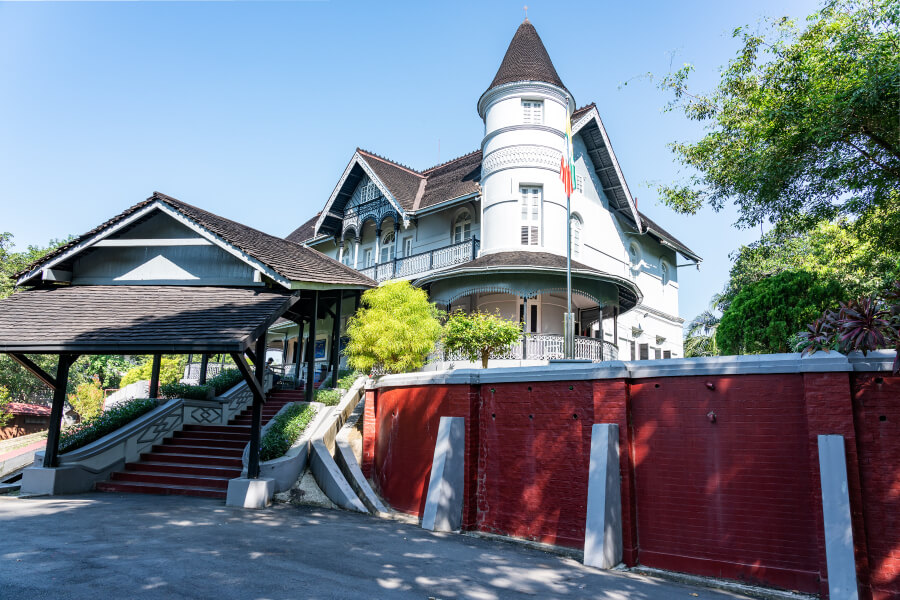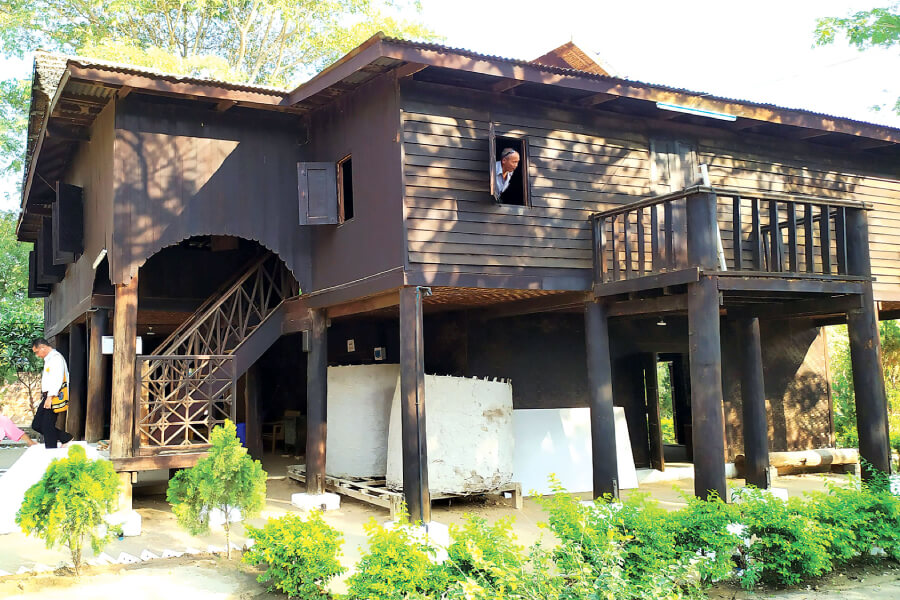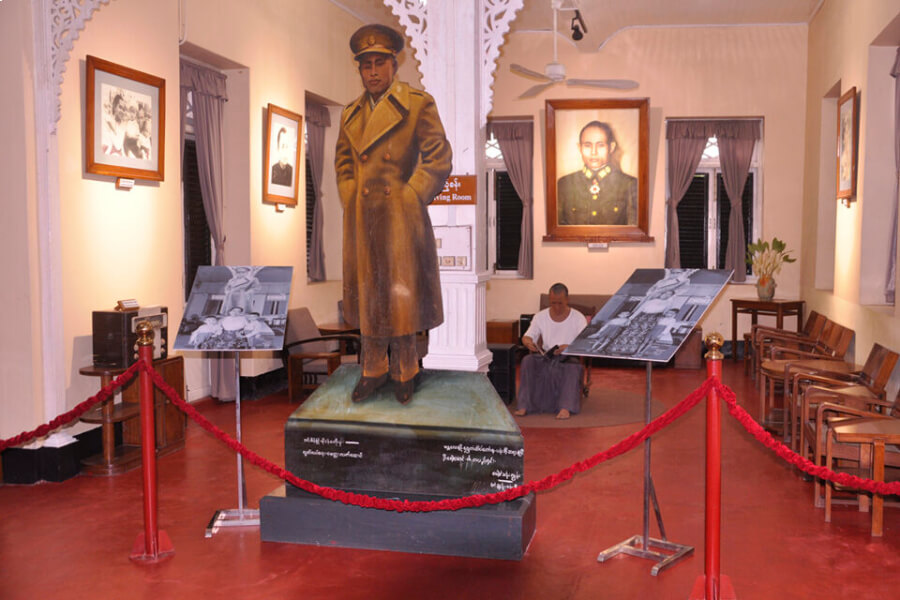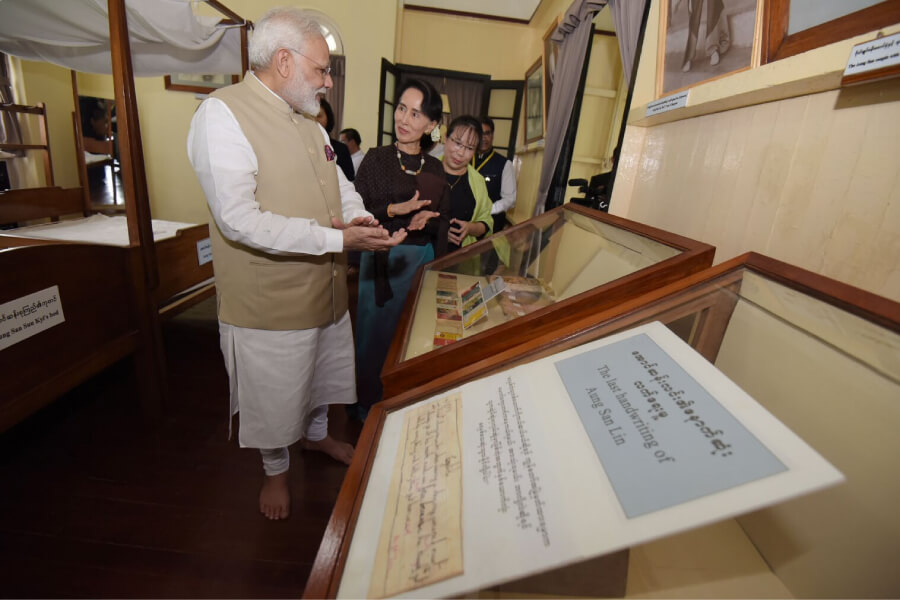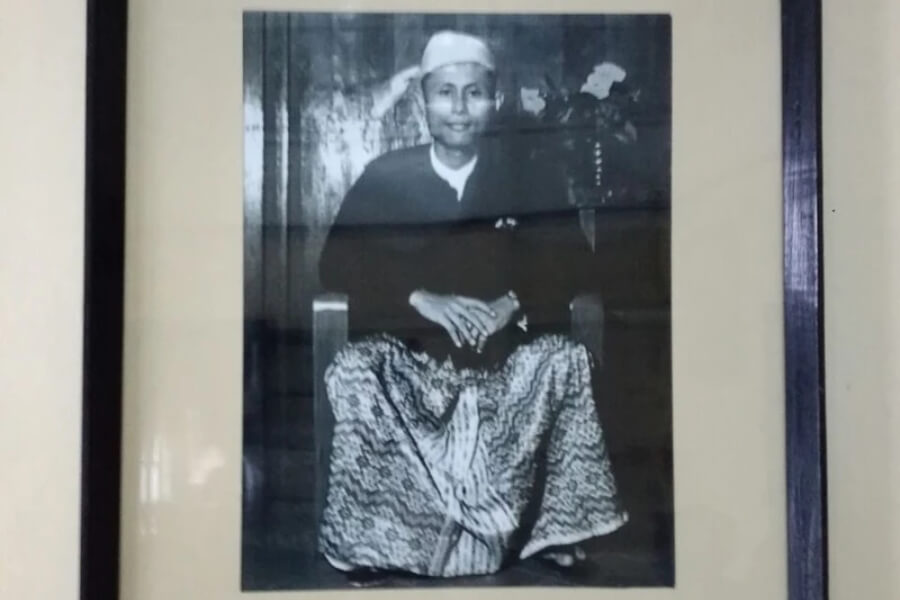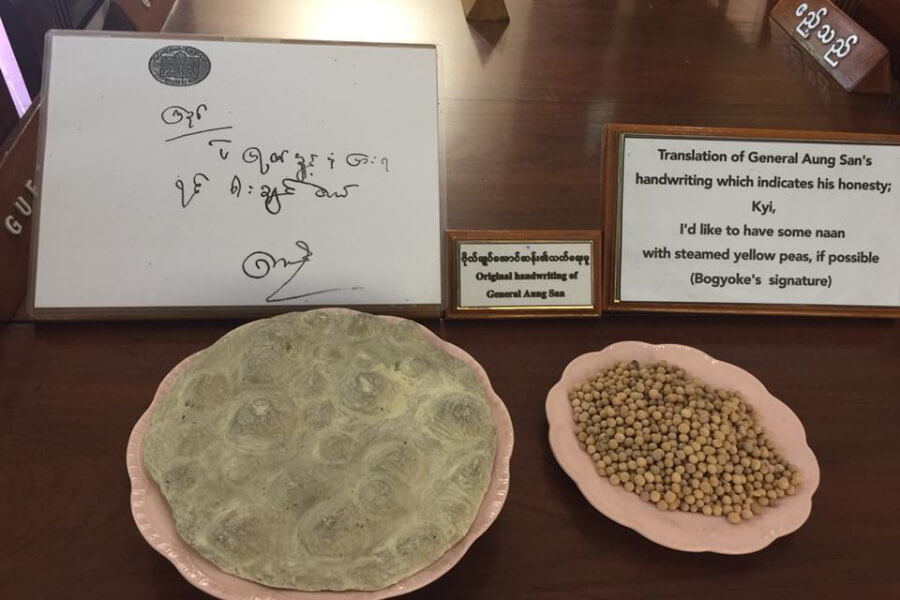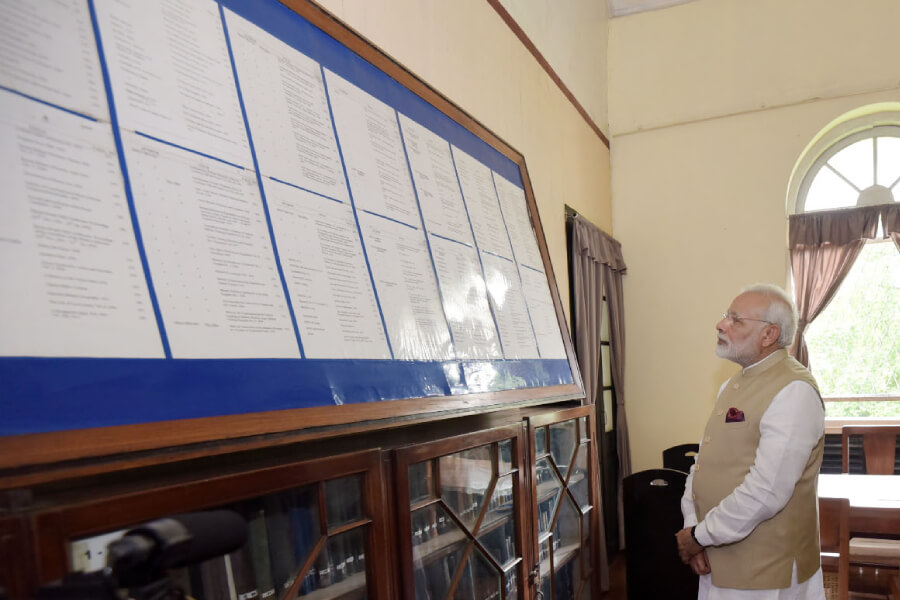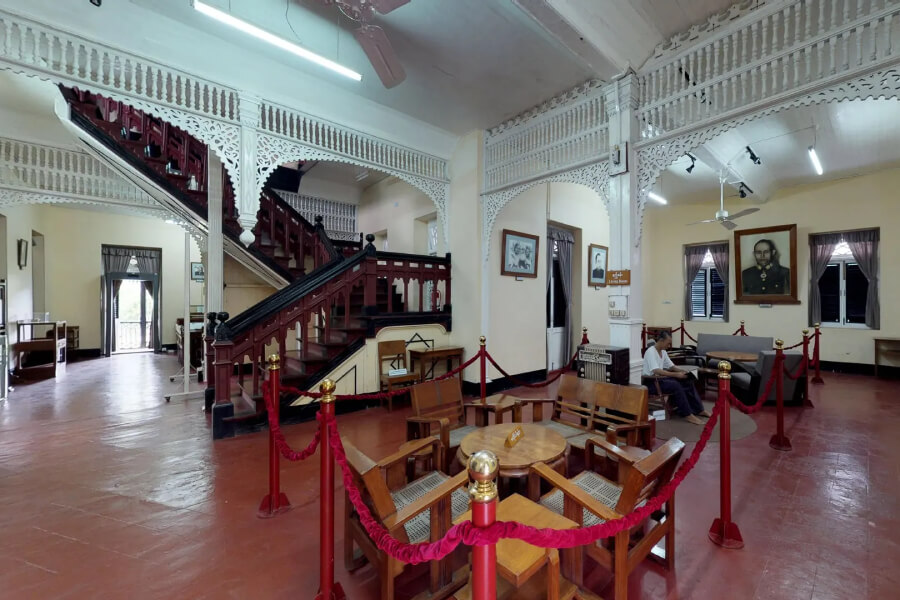Are you ready to embark on a journey through the remarkable history of Myanmar? The Bogyoke Aung San Museum is your gateway to a world of cultural significance and historical value. If you're planning a trip to Myanmar, don't forget to explore our selection of Myanmar tours for a comprehensive travel experience.
Bogyoke Aung San Museum: A Journey Through Myanmar's History and Independence
Nestled in the heart of Yangon, Myanmar, the Bogyoke Aung San Museum stands as a living testament to the nation's history and its relentless struggle for independence. The museum, which was once the personal residence of General Aung San, provides visitors with an immersive experience into the life and legacy of this revered leader and the broader context of Myanmar's fight for sovereignty.
General Aung San, a name that resonates deeply with every citizen of Myanmar, was a pivotal figure in the nation's quest for independence from British colonial rule. His unwavering dedication, vision, and leadership were instrumental in shaping the nation's destiny. It is only fitting that his former residence has been preserved and transformed into a museum to honor his memory and the struggle he spearheaded.
The history and origin of the Bogyoke Aung San Museum are intricately intertwined with the nation's history. General Aung San's residence, where the museum now stands, was not just any house. It was the epicenter of discussions, meetings, and decisions that paved the way for Myanmar's sovereignty. The walls of this historic building bore witness to the aspirations of a nation yearning for freedom.
The transformation of General Aung San's residence into a museum began in 1962, shortly after Myanmar gained independence. This effort was more than just preserving a physical structure; it was about preserving the spirit of a nation. The museum's mission goes beyond mere historical documentation; it is an educational platform designed to inspire and remind future generations of their roots. Through carefully curated exhibits, it tells the story of Myanmar's journey towards independence, ensuring that the sacrifices, struggles, and vision of the past are never forgotten.
7 Must-See Artifacts at Bogyoke Aung San Museum
Now, let's explore 7 must-see artifacts at the Bogyoke Aung San Museum on your Myanmar packages.
1. Aung San's Personal Belongings
General Aung San's clothing, impeccably preserved, is one of the most striking facets of this collection. His traditional garments, meticulously maintained, provide more than just a visual spectacle. They are a reflection of the character and style of a leader who embodied the nation's identity. The clothing, with its cultural significance, takes visitors on a journey into an era when Myanmar was on the brink of a new beginning.
Beyond the clothing, General Aung San's personal belongings include an assortment of accessories and artifacts. These items, often overlooked in the grand narrative of history, offer a deeper understanding of the man behind the legend. His eyeglasses, watches, and writing instruments are personal items that provide a window into his daily life. They reveal the routines and habits of a leader who was both visionary and human.
General Aung San's personal belongings are not distant relics; they are intimate witnesses to a leader's vision, sacrifices, and unyielding determination. Their presence in the museum reminds visitors of the enduring values and principles that have shaped Myanmar's identity.
2. Rare Independence Declaration
Among the remarkable artifacts on display, the rare independence declaration stands as a testament to the nation's unwavering determination to break free from colonial rule. This document, preserved within the museum's walls, is not just a piece of paper; it's a symbol of a defining moment in Myanmar's history.
Myanmar, formerly known as Burma, was under British colonial rule for nearly a century. The struggle for independence was marked by the dedication and sacrifices of countless individuals who sought to regain their nation's sovereignty. In this backdrop of historical significance, the rare independence declaration emerged as a beacon of hope.
The declaration was closely linked to the Panglong Agreement, which was signed in January 1947. Representatives from various ethnic groups and political factions convened in Panglong under the leadership of General Aung San. This landmark agreement laid the foundation for a united and independent Myanmar, emphasizing the principles of equality, self-determination, and the right to secede from the Union after a decade.
One of the most notable aspects of the rare independence declaration is its emphasis on unity in diversity. Myanmar is a nation characterized by its cultural diversity, with numerous ethnic groups, languages, and traditions. This document recognized and celebrated this diversity, underlining the idea that unity and cooperation among these diverse groups were essential for the nation's progress.
On January 4, 1948, the rare independence declaration was formally issued, marking Myanmar's official break from British colonial rule and the establishment of the Union of Burma, later known as Myanmar. It was a momentous occasion, and the declaration was not just a formality; it was a powerful assertion of Myanmar's sovereignty and its commitment to self-governance.
For the people of Myanmar, the rare independence declaration is a source of immense national pride. It represents the collective struggle and sacrifice that culminated in the nation's newfound freedom. It serves as a reminder of the importance of safeguarding their hard-won independence and the values of unity, diversity, and self-determination.
The fact that the rare independence declaration is meticulously preserved within the Bogyoke Aung San Museum is a testament to its historical and cultural significance. The museum provides a platform for visitors to learn about the nation's history, the sacrifices made, and the ideals that have shaped modern Myanmar. It is a place of remembrance, education, and inspiration.
3. Historical Photographs Galore
A visit to the Bogyoke Aung San Museum is, in essence, a journey back in time. The historical photographs displayed here offer a fascinating glimpse into Myanmar's past. Each image serves as a piece of a larger puzzle, connecting the viewer with pivotal moments in the nation's history.
What makes these historical photographs truly remarkable is their ability to capture both the struggles and the triumphs that have marked Myanmar's journey. In one frame, you might witness the fervor and determination of individuals fighting for independence. In another, you'll see the joy and celebration that followed the nation's newfound sovereignty. These photographs are not merely static images; they are windows into the emotions and experiences of the people who lived through these historic moments.
Leaders and visionaries who played a crucial role in shaping Myanmar's history come to life through these photographs. General Aung San, known as the father of the nation, is a central figure in many of these images. Visitors can see him in discussions, negotiations, and at the heart of historic events that laid the groundwork for Myanmar's independence. These photographs reveal the human side of leaders, showing their dedication and commitment to a common cause.
The historical photographs also offer a glimpse into Myanmar's rich cultural heritage. Traditional clothing, customs, and ways of life are all depicted in these images. They serve as a reminder of the nation's cultural diversity and the aesthetics that define Myanmar.
4. Traditional Garments and Accessories
Myanmar is a land of diverse ethnic groups, each with its unique traditions, and the traditional garments and accessories showcased in the museum capture the essence of this rich tapestry. These pieces are not merely clothing; they are embodiments of the nation's heritage, symbolic expressions of history, identity, and craftsmanship.
What immediately strikes visitors is the remarkable craftsmanship that goes into creating these traditional garments and accessories. The textiles are adorned with intricate embroidery, vibrant patterns, and a riot of colors. The jewelry and accessories, often handcrafted, display remarkable attention to detail. It's a testament to the artistic traditions that have been honed over generations.
These garments and accessories are not just aesthetically pleasing; they are repositories of symbolism and tradition. The choice of clothing and adornments often reflects the wearer's social status, age, and cultural background. Every color, pattern, and accessory carries meaning, allowing the observer to understand not just what someone is wearing but also the story they are telling.
5. Handwritten Manuscripts
Each handwritten manuscript on display at the museum is a portal into the past. The inked characters and delicate pages seem to whisper the thoughts, wisdom, and knowledge of those who penned them. They provide a tangible connection to bygone eras, offering visitors the opportunity to embark on a journey through history.
Myanmar boasts a literary tradition that dates back centuries, and these manuscripts are precious remnants of that tradition. They encompass a wide range of subjects, from religious texts and historical chronicles to philosophical treatises and literary works. These documents serve as windows into the cultural and intellectual evolution of the nation.
The manuscripts not only record historical events but also encapsulate the intellectual climate of their time. They offer insights into the philosophical, religious, and literary ideas that have influenced Myanmar's culture and society. These documents allow visitors to explore the intellectual journey of the nation and understand the foundations upon which Myanmar's identity is built.
6. Commemorative Medals and Awards
Commemorative medals and awards, these elegant tokens, are far more than just pieces of metal and ribbon. They are symbols of a nation's appreciation for those who have made remarkable contributions to society. Throughout Myanmar's history, these medals and awards have played a significant role in celebrating exceptional achievements.
Myanmar has a rich tradition of bestowing medals and awards to acknowledge and celebrate significant accomplishments. These tokens symbolize the nation's enduring commitment to recognizing and commemorating excellence in various fields. They are not just symbols; they are tangible expressions of Myanmar's cultural heritage, reflecting the nation's values.
A notable aspect of these medals and awards is their role in honoring national heroes. Figures like General Aung San, who played a pivotal role in Myanmar's struggle for independence, are commemorated through these medals. They serve as a reminder of the sacrifices made by these individuals for the betterment of the nation, and they inspire others to follow in their footsteps.
The collection encompasses a diverse range of achievements, from bravery in the armed forces to contributions in the arts, literature, culture, and exceptional service in the public and private sectors. These medals and awards not only honor past accomplishments but also serve as a source of inspiration for future generations to strive for excellence.
7. The Personal Library
The personal library within the Bogyoke Aung San Museum is an intellectual treasure. It houses a diverse range of books, covering a multitude of subjects, from literature and philosophy to history and science. Each book is a key to unlocking the intellectual world of Myanmar, offering insights into the thoughts and ideas that have shaped the nation.
These books hold immense cultural and historical significance. They are a testament to Myanmar's profound literary traditions and intellectual contributions to the world. These texts are more than just pages filled with words; they are living documents that represent the nation's values, ideas, and literary achievements. They echo the voices of Myanmar's thinkers, scholars, and authors.
Visitors to the personal library have the unique opportunity to take a glimpse into the past, to explore the thoughts and ideas of Myanmar's intellectual giants. These books provide a window into the cultural evolution of the nation, allowing visitors to understand the intellectual foundations that have shaped Myanmar's identity. It's a journey through time, a chance to connect with the past, and a profound experience of cultural and intellectual exploration.
Bogyoke Aung San Museum: Practical Information
Opening Hours
The Bogyoke Aung San Museum is open to the public on all days of the week except for Mondays and public holidays. Here are the official opening hours:
Tuesday to Sunday: 9:30 AM to 4:30 PM
Visitor Tips
Respect Cultural Norms: When visiting the museum, remember to dress modestly and remove your shoes before entering. It's a sign of respect for the local customs and traditions.
Photography Restrictions: Be aware that photography may be restricted in certain areas of the museum, particularly in rooms where sensitive historical artifacts and documents are on display. Always ask for permission if in doubt.

